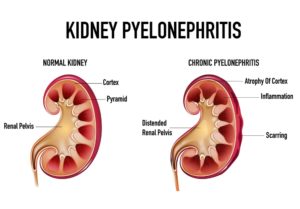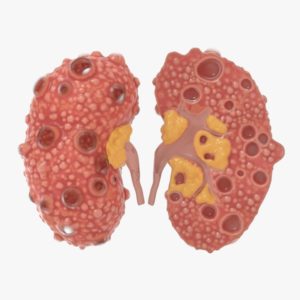Silica exists naturally in the majority of rocks, sand, and clay, as well as in products such as bricks and concrete. Additionally, silica is utilized as a filler in some polymers. These materials generate dust when they are cut, sanded, and carved in the workplace. Some of this dust may be tiny enough to be inhaled deeply and cause damage to the lungs. Silicosis is a chronic disease caused by inhaling significant quantities of respirable crystalline silica dust (“RCS”) over an extended period of time. Once within the lungs, dust particles are targeted by the immune system, producing inflammation and eventually leading to patches of ineffective, hardened, and scarred lung tissue.
Silica is one of the most abundant minerals found in the earth’s crust and is used in a wide range of products and industries. Crystalline silica is most hazardous to workers’ health when it is produced as dust, gets airborne, and is then inhaled.
Examples of occupational tasks that may generate respirable silica dust include:
- During manufacturing and installation of composite (engineered or manufactured) stone countertops, the following must be observed:
- Excavation, earthwork, and drilling operations at a factory
- Machine activities for preparing clay and stone
- Paving and surface treatment
- Mining, quarrying, and mineral ore processing methods
- Tunnelling
- Construction work procedures
- Brick, concrete, or stone cutting, particularly utilizing dry techniques
- Abrasive blasting (blasting agent must not contain greater than 1 per cent of crystalline silica)
- Foundry moulding
- Angle grinding, jackhammering, and chiselling of concrete or masonry, as well as
- Pottery making.

Symptoms of silicosis
The symptoms of silicosis include shortness of breath, cough, fever, and blue skin.
- The earliest symptoms of silicosis include shortness of breath during physical activity and a harsh, dry cough. As the condition advances, patients may experience increased difficulty breathing, sputum production, and bloody coughing.
- Nails affected by congestive heart failure may have a bluish hue.
- Patients with advanced silicosis may report difficulty sleeping, chest pain, hoarseness, and appetite loss.
- Patients with silicosis are at a high risk for tuberculosis (TB).
- Silicosis can manifest itself in acute, rapid, and chronic forms.
Chronic silicosis:
It is the most prevalent type of the disease, and it often develops after 10 years or more of exposure to low levels of crystalline silica. Initial chest X-ray abnormalities are followed by the gradual development of a cough and breathing problems.
This kind of silicosis often manifests five to ten years following exposure to greater amounts of crystalline silica.
Acute silicosis:
It is caused by exposure to extremely high quantities of crystalline silica over a brief period of time. Person has fever, severe chest pain, and difficulty breathing. These symptoms may manifest abruptly. Acute silicosis can result in mortality in a matter of months.
Pneumoconiosis, also known as the scarring of lung tissue, caused the onset of the symptoms.
Silicosis diagnosis
Your physician will inquire about your symptoms, including your occupation and length of exposure to silica dust. Your doctor will also examine and listen to your lungs. The following tests may be conducted:
- Chest radiograph
- Tests of lung function or spirometry
- A CT scan of the lungs
If you have silicosis, you may be referred for follow-up care to a lung specialist.
Treatment
Silicosis is incurable since the lung damage cannot be healed. The purpose of treatment is to alleviate symptoms and enhance quality of life. Frequently, the illness will continue to worsen, resulting in more lung damage and severe impairment.
It is essential to take the following precautions to reduce the likelihood of complications:
- Ensure that you are not exposed to silica any longer.
- Stop smoking (if you smoke)
- Have regular tuberculosis (tb) skin tests, as silicosis makes you more susceptible to tb and other illnesses.
The influenza vaccination and pneumococcal vaccination are also advised. Your physician can arrange these for you. Antibiotics may be recommended for the treatment of chest infections.
If you are having difficulties breathing and your blood oxygen levels are low, you may be offered long-term oxygen therapy.
Bronchodilator medications, which relax the muscles in your lungs and airways, may also be administered.
In extreme cases of silicosis, a lung transplant may be an option, but strict health standards must be met first.
Prognosis
Silicosis has been less prevalent over time as a result of enhanced workplace safety precautions. However, silicosis can still occur, and there is now no treatment available. According to the American Lung Association, more than 100 people die of silicosis every year.
The prognosis for your future depends on the severity of your ailment. Both accelerated and chronic silicosis can result in severe lung scarring. Scarring kills good lung tissue, hence decreasing the amount of oxygen that the lungs can provide to the blood.
Prevention
Eliminating silica dust from the workplace is essential for preventing silicosis. When dust cannot be regulated, as may be the case in the sandblasting business, personnel should wear protective equipment such as hoods that provide clean external air or masks that effectively filter out minute particles. Such protection may not be provided to all workers in a dusty environment (such as painters and welders), so sand should be avoided wherever possible.
Regular chest x-rays should be administered to workers exposed to silica dust so that issues can be diagnosed early. Employees who smoke should be urged to quit. Other preventive strategies include pneumococcal vaccine and annual influenza vaccination to protect workers from diseases to which they may be particularly susceptible.
If you suffer from silicosis, you must:
- Stop using tobacco products and smoking.
- Other lung irritants, such as secondhand smoke and other air pollution, should be avoided.
- Receive all of the immunizations recommended by your doctor.
- If you continue to work in an area containing silica dust, use the proper personal protection equipment, such as N95 masks and respirators. Normal dust masks or face coverings are insufficient.
- Follow the necessary procedures for working in a silica dust environment, including ventilation and the use of moisture to reduce dust levels.
Complications of silicosis
Patients with silicosis are susceptible to the following conditions:
- Tuberculosis (TB)
- Nocardiosis
- Lung carcinoma
- Sclerosis systemic progressive
- End-stage renal disease
- Rheumatoid arthritis is possible



